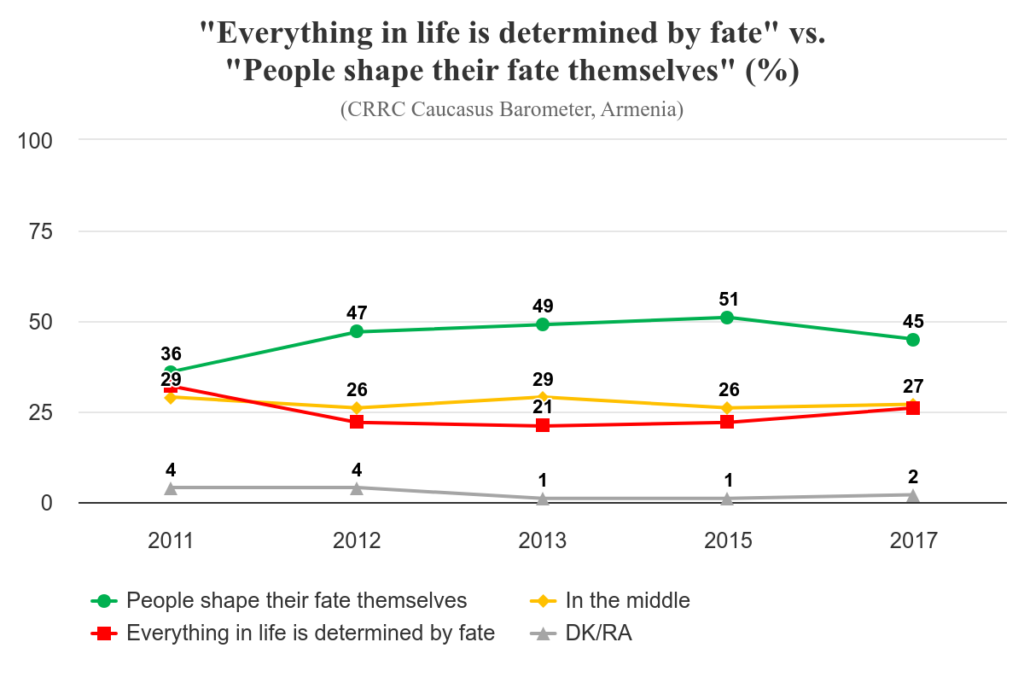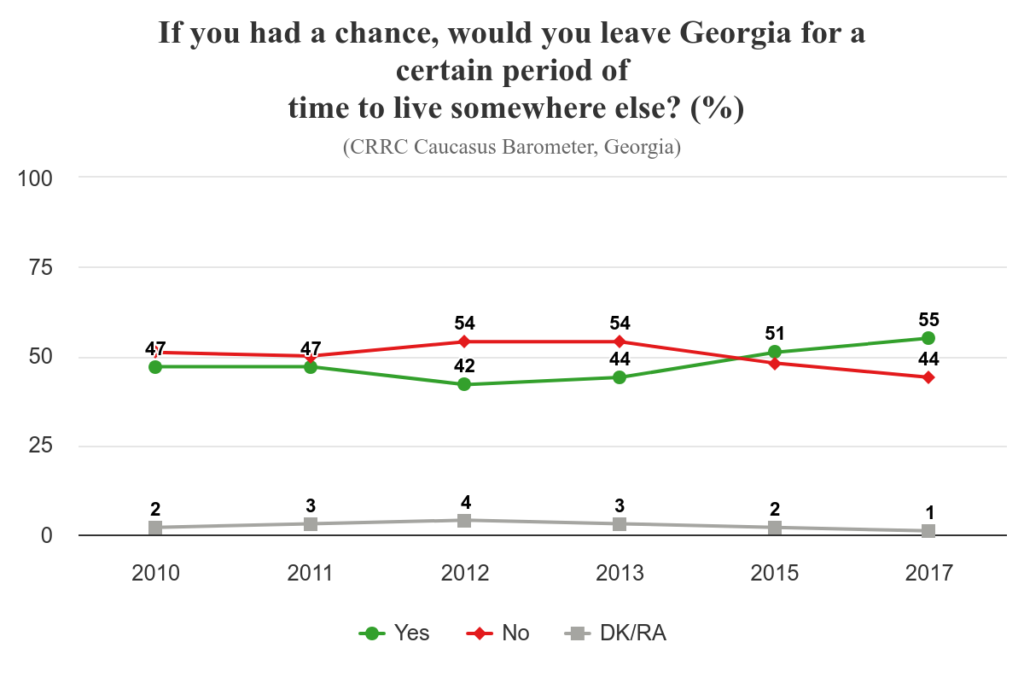The population of Georgia has declined after the dissolution of Soviet Union from 5.4 million to 3.7 million according to the latest estimates provided by the Georgian National Statistical Office. The mass emigration of the Georgian population in the 1990s has…
Migration
A previous CRRC blog post showed how people’s willingness to temporarily emigrate from Armenia and Georgia varied according to their belief in whether everything in life is determined by fate or people shape their fate themselves. The blog post concluded that compared…

Scholarship points to a number of factors that contribute to an individual’s willingness to emigrate, either on a temporary or permanent basis. Political, economic, and social conditions are all important variables in the emigration equation. This blog post uses data from CRRC’s Caucasus Barometer survey to…

The UN estimates the number of international migrants worldwide to be on the rise. Academics and policy makers continue to pay considerable attention to drivers of international migration, i.e. the factors that cause people to move from their home country, either…

Our 300th post is by Ani Navasardyan, from the Civilitas Foundation in Armenia, who was working with our Georgian and Regional office for a month.
External migration from Georgia since its independence in 1991 has significantly influenced the shape and dynamics of modern Georgia. For instance, almost everyone in Georgia knows at least someone who has migrated. Entire families are supported by remittances sent home…
Migration is a major factor in Georgia. Many Georgians live abroad, and by some estimates the money they send back accounts for nearly 10% of Georgia’s GDP. Did you know that households in rural areas who receive such aid are…
How many Georgians have applied for asylum in the last 15 years? According to UNHCR data, about 66,600 Georgian citizens have applied.
12
